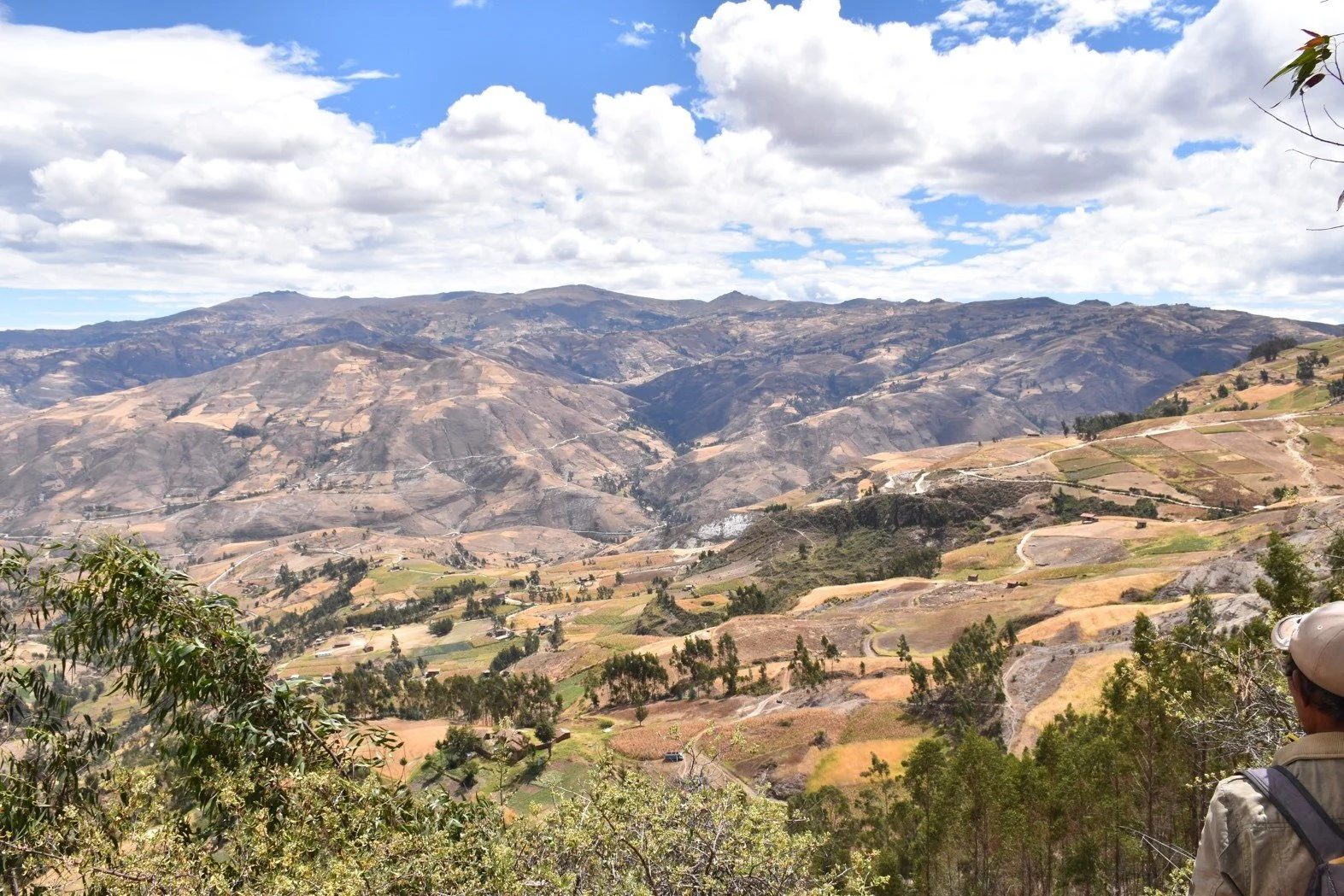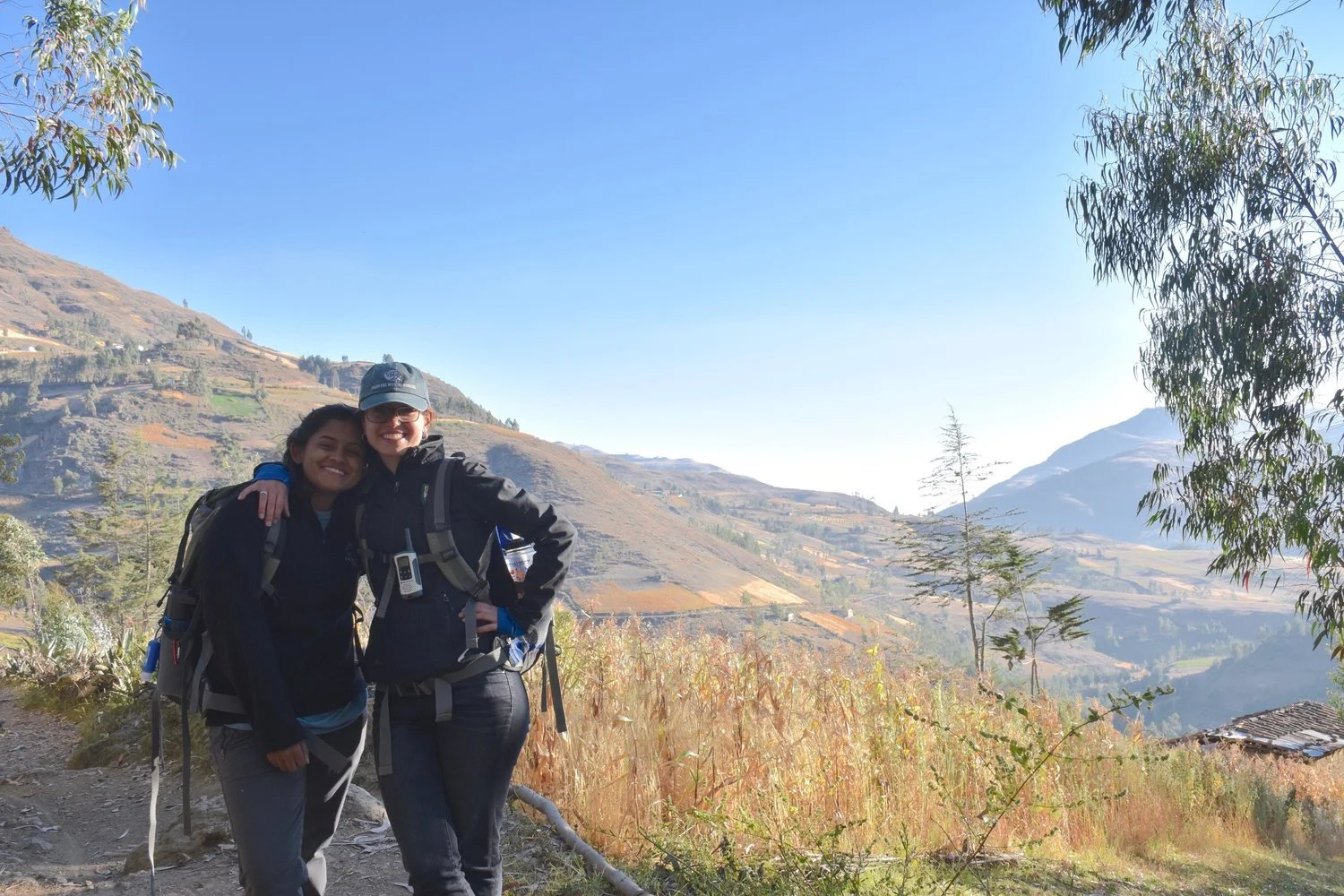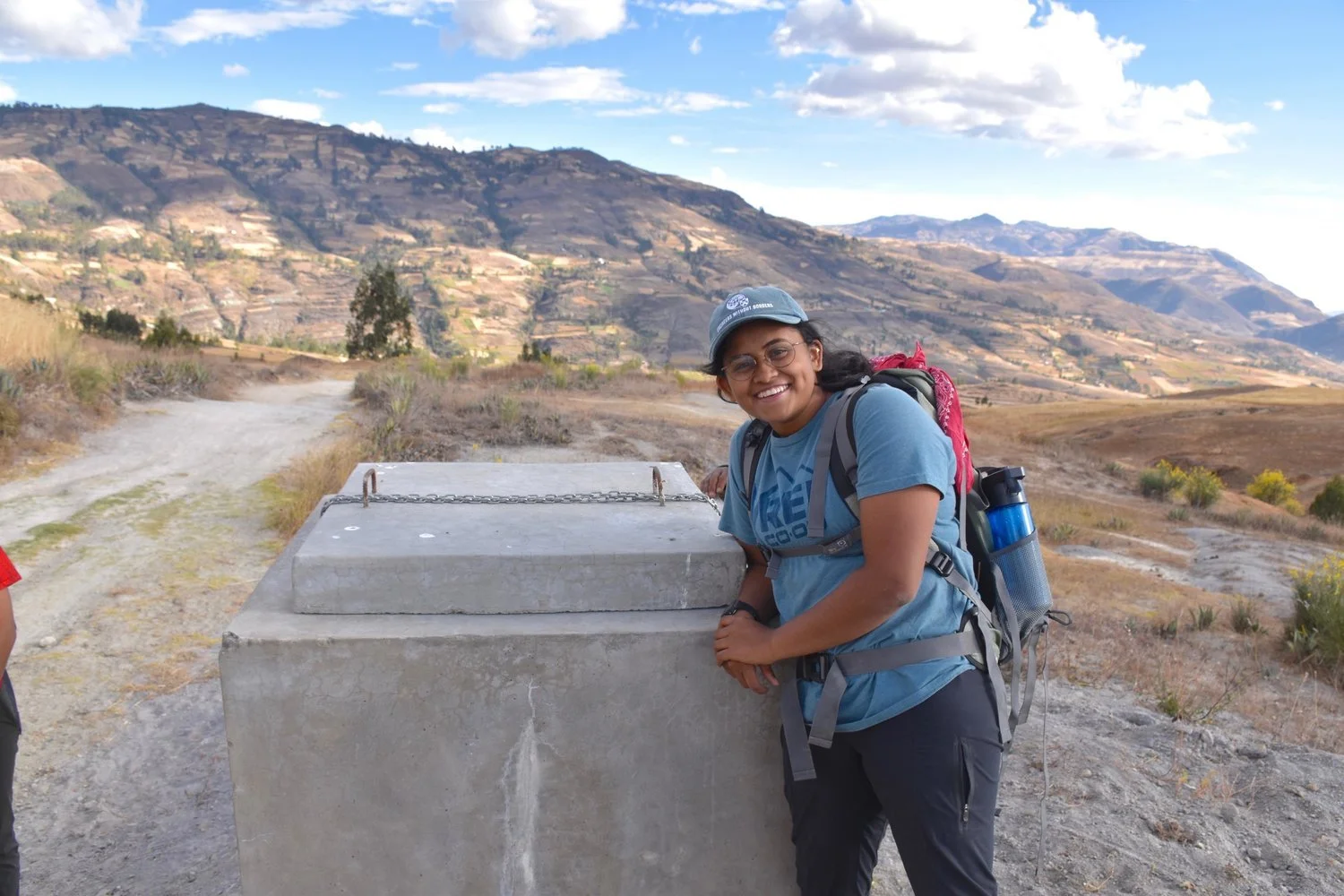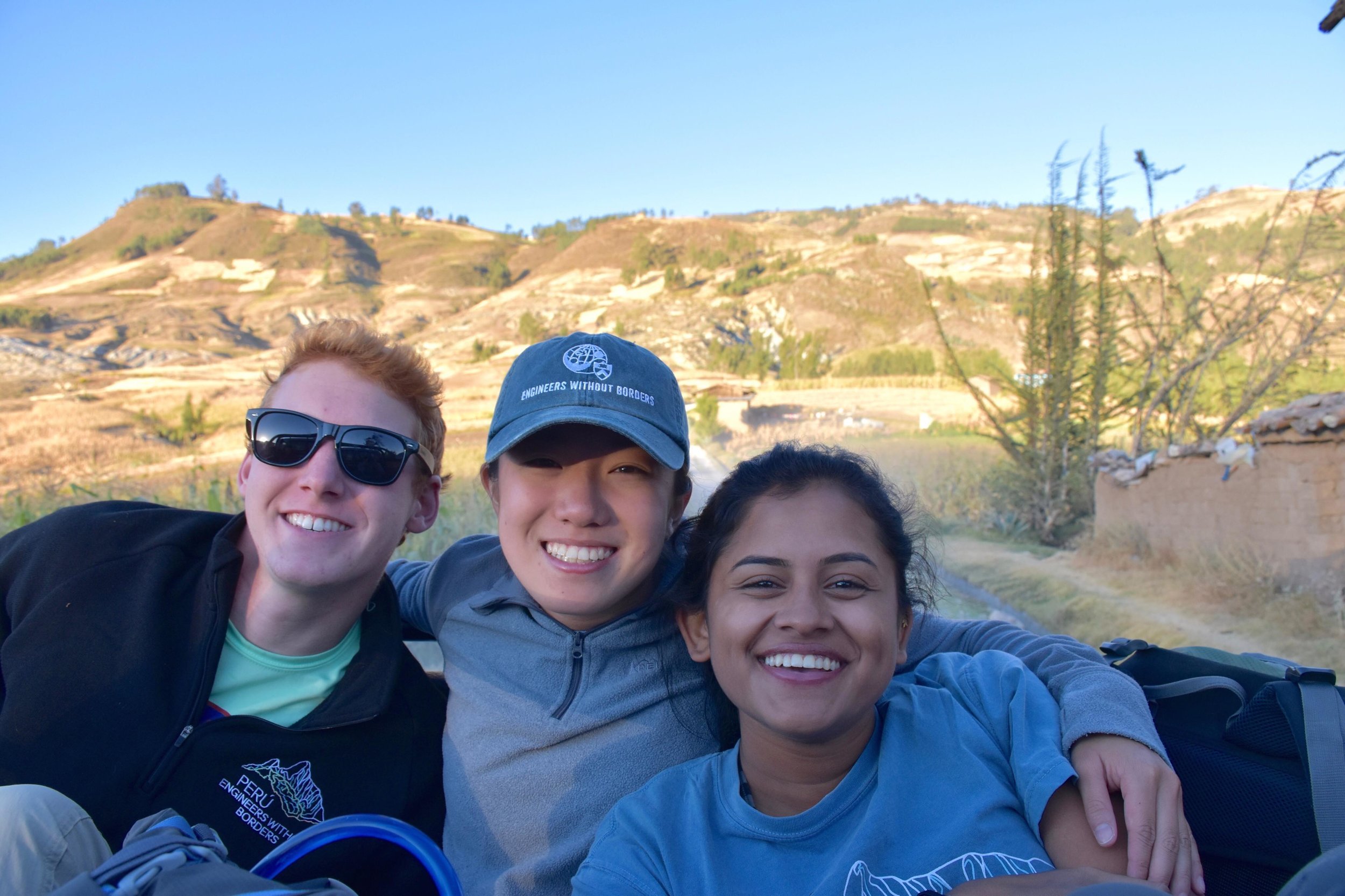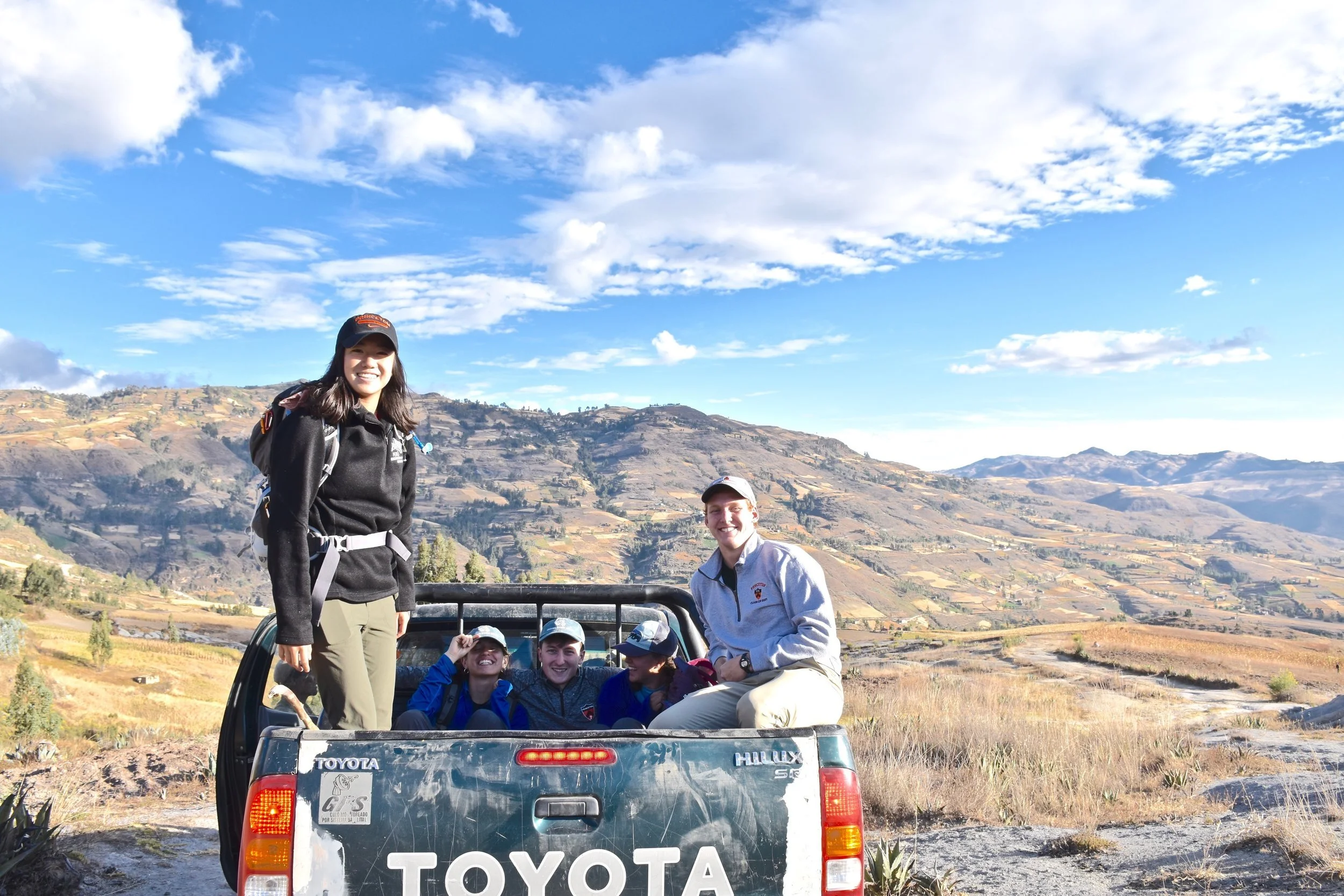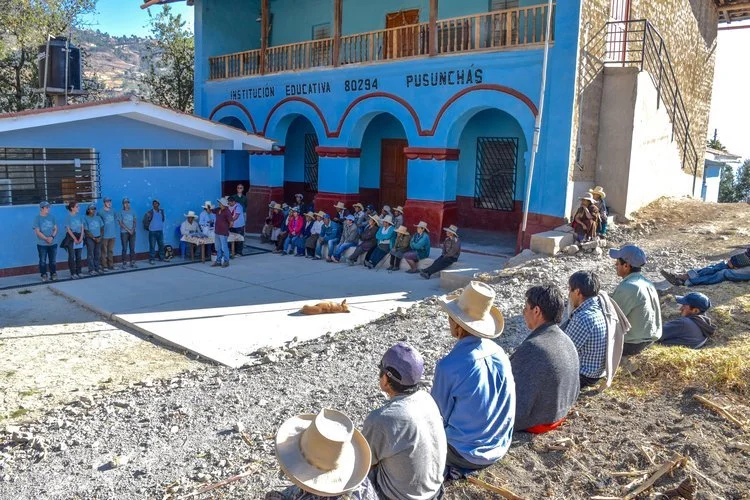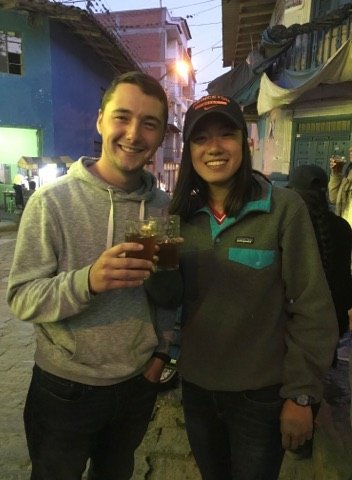El Comienzo // The Beginning
By Sydney Hsu
After two long days of travel, EWB-Princeton has safely arrived in Otuzco. It took multiple airplanes (a whopping 27 hours of air travel for Camille), long layovers (in which Riley and Sofia found time to hit the beach in Florida), a 9-hour bus ride from Lima to Trujillo, and finally, packing ourselves in a van to Otuzco (with some of our luggage strapped precariously to the top of the vehicle in Peruvian fashion).
First, an introduction to the team: Perú Team “Best Team” is led by project co-managers and rising juniors Sofia Bisogno and Sneha Iyer. As the Peruvians like to say, Sofia is la reina of the project with her fluent Spanish and experience with the system, both invaluable assets to the team. Sofia does only the best for the team. Our other fearless leader Sneha (known as “Esneja” here) is as prepared for the trip as she would be for the Apocalypse, carrying technical notes in her backpack, Vaseline for dry lips, the camera responsible for these amazing photos, and key knowledge in her brain.
Our beloved PMs, Sneha and Sofia.
Sneha posing with her baby- the pressure break she designed. It’s responsible for alleviating the water pressure accumulated from the mountainous land and regulating the flow of the system.
Other rising juniors on the team are Camille Heubner, Nicholas Kick, and Riley Wagner. One of our technical team co-leaders, Camille is the only other experienced travel team member and can somehow keep all the pipeline colors and house locations straight in her head, even with the smaller quantity of oxygen in the air available to us at the moment. The other tech team co-leader is Nicholas, who has demonstrated his experience in the outdoors with chlorophyll pills, electrolytes in his water bottle, and half of the medications at CVS in his backpack. Nicholas has also shown great perseverance so far as he fights through allergies and the disadvantage of having pale skin exposed to the sun. Riley is the leader of the financial team. Coming straight from a semester abroad, his Spanish has really helped communication with community members and his chemical engineering background gives me greater confidence that our own Clorox-treated water isn’t undergoing any strange reaction in our bodies.
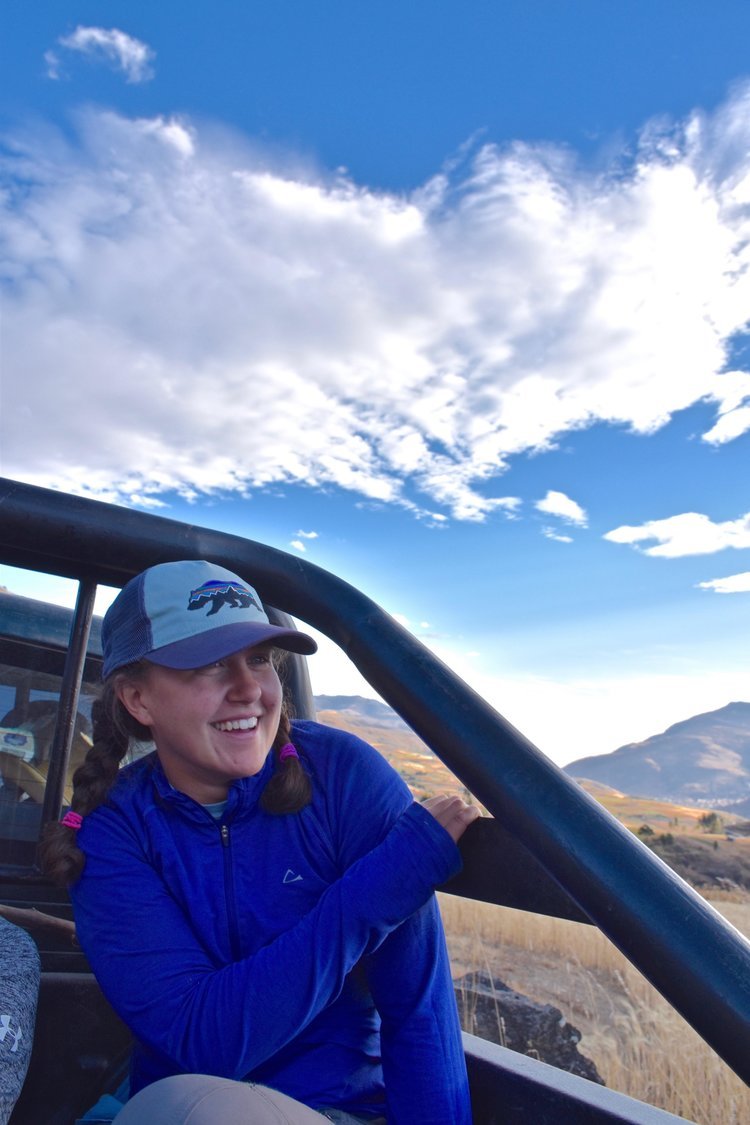

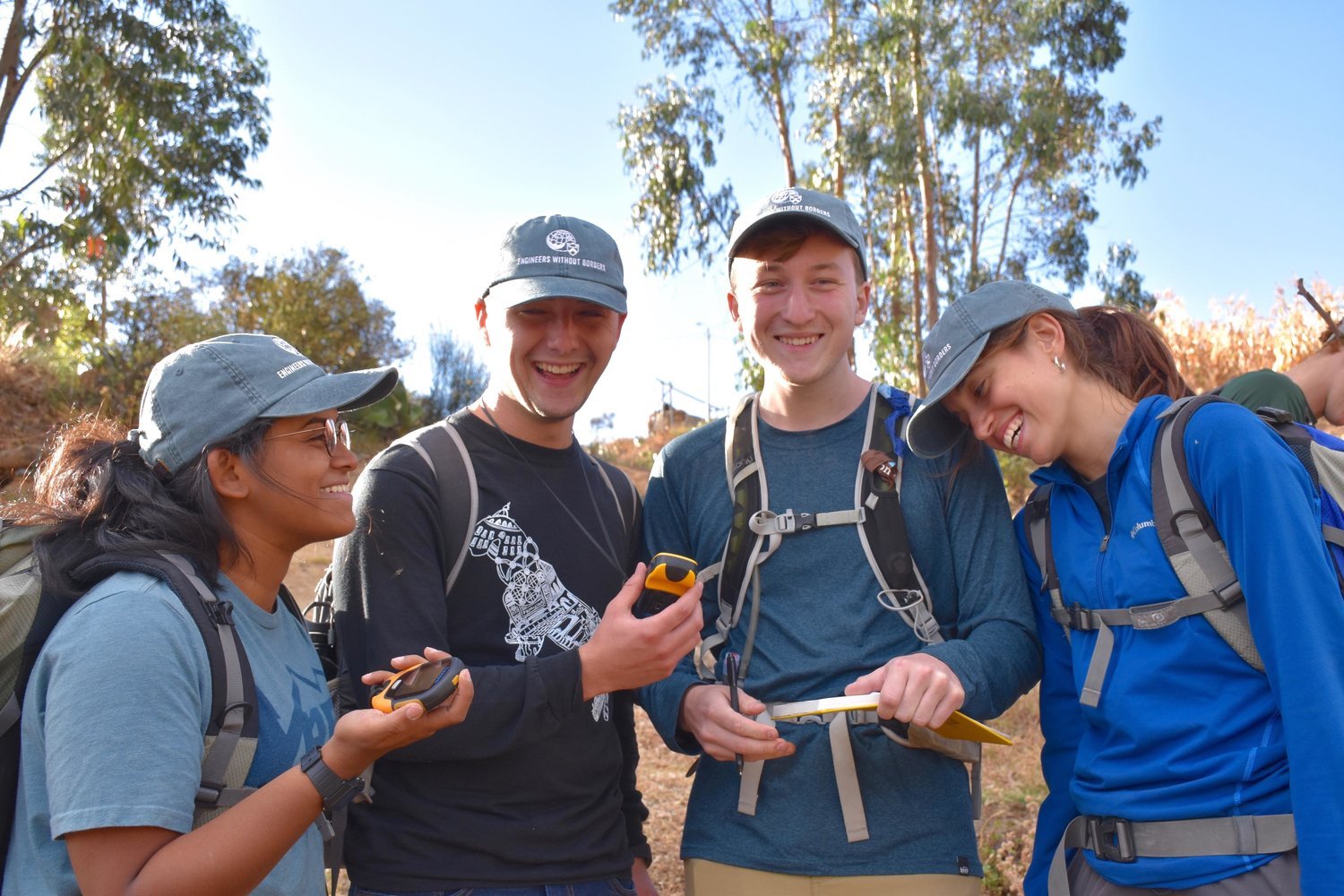
Sneha, Riley, Nicholas and Sofia having fun with the data.
Next, we have the fresh-outta-freshman-year rising sophomores on the team, Scott Overbey and me. Scott is the publicity team leader and has lugged a camera-equipped drone in a French-horn-like case all the way from his proud Cincinnati, Ohio. He has been running up and down the mountains just for some good angles and video footage. I serve as the community team co-leader, and having been to Perú before, I am just as excited to start digging trenches and putting in work as I am for eating choclos (corn with large puffy kernels), alfajores (a Peruvian pastry), and Sublimes (Peruvian chocolate bars). Last but not least, our technical mentor for the first half of the trip is Don Moris, who has decades of water systems and civil engineering experience in Africa as well as South America.
Scott, Sydney and Sneha riding in the truck bed.
Don, Sofia and Leoncio examine the source capture, the highest point where the water is initially collected.
Walking around the community with the JASS to familiarize ourselves with the terrain.
Pusunchás is a remarkably friendly community. We were warmly welcomed by Teresa, Leoncio, Luciano, Julio, Erasmo, and the rest of the in-country team. Our first few days were spent hiking sections of the water system for assessment and data collection. Working through the layout of the system on a 2D map is enough of a challenge but hiking the rugged Andean terrain with Teresa and Leoncio leading the way is quite a different story. Even for a team of athletes (two rugby players, one varsity rower, and an Iron Man finisher), frequent breaks for hydration and breathing are essential. Meanwhile, Teresa and Leoncio tackle the slopes at astounding pace, as if we weren’t battling 10,000+ ft elevation at all. The topographical variation cannot be fully understood without stumbling down the mountain in person. On just the third day, we hiked over 10 miles in various conditions: on soft dirt, through corn fields, sliding down cliffs, “butt-climbing” down rock faces as Sofia puts it, and clinging to gravelly slopes eroding down the mountainside. Parts of Pusunchás can be described as taking the dry, rocky and cactus-y terrain of the American Southwest and copy-and-pasting it onto the slanted slopes of the largest ski mountain you can think of. One of the few aspects of Pusunchás that remained constant throughout was the presence of domesticated animals: donkeys screeching, chicks following the mama turkey, scattered land mines of dung, and dogs giving chase at the sight of a bunch of gringos invading their territory.



Hiking the entire system (about 18 kilometers and 68 homes) in these first couple of days proved to be incredibly productive. The team gathered GPS coordinates and altitude measurements at every home and pressure break along the way, which will help generate a more accurate system map. Our lunches are generously provided by a different family each day, often consisting of rice, potatoes, corn, lentils, rocoto spice, and protein from either chicken, rabbit or cuy (guinea pig, a Peruvian special). It has been extremely impactful to shake the hands of the family members in Pusunchás and to hear how delivering potable water through a simple pileta, or tapstand, will drastically change their lives for the better.
Fun times riding in the back of Julio’s truck— our daily transportation to and from Pusunchás.
The cliffs overlooking the sub-community La Colpa. The pipeline will need to somehow navigate and run through this tricky terrain.
The cliffs overlooking the sub-community La Colpa. The pipeline will need to somehow navigate and run through this tricky terrain.
One highlight of the trip thus far is the community meeting. On the second day, we introduced ourselves and presented our project outline in front of the Pusunchás families, describing our goals and system regulations. We reiterated that the water from the system is for drinking and cooking only and emphasized the concept of a community-wide effort to get the trenches done.
Presenting in front of the community at the local school.
Another highlight so far is exploring the city of Otuzco. The Marianistas community center, the place where we are staying, is a block away from the main square. The city is small, very walkable, and filled with bakeries, restaurants, and discotecas. Riley and I had quite the cultural experience trying a traditional Peruvian drink off a street cart called emoliente, a healthy all-natural drink for soothing the stomach. Not quite sure if I’ve felt the effects yet, but at least the hand sanitizer consistency staved off our hunger.
In sum, just 4 days in out of 32, the team has thoroughly enjoyed all aspects of the trip so far—including the cuy. We are happy, healthy and motivated. Only a few of us are sunburned. This weekend, we are taking advantage of the down time to work through technical details of the system and plan future improvements. The team cannot wait to get our hands dirty and begin engineering out in the field.
Hasta pronto.
The team and Teresa, also known as Mama T.

